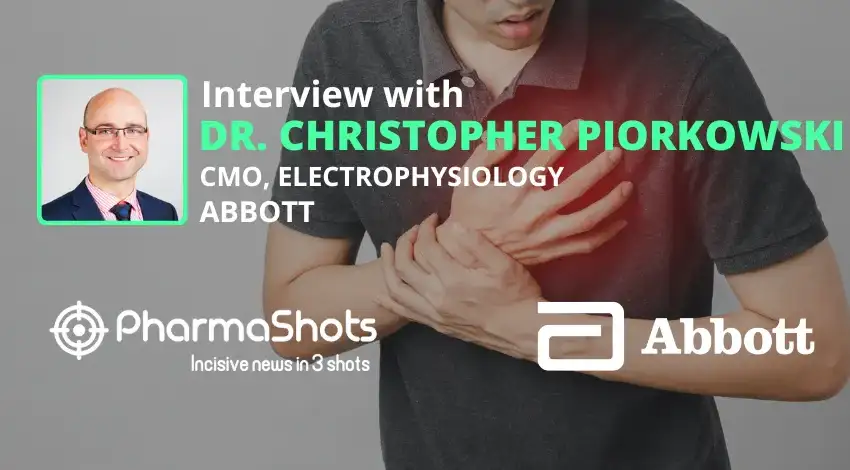Enhancing Accessibility to Medicine: Joshua Salsi from Biocon Biologics in Conversation with PharmaShots
Shots:
- Biocon Biologics’ Yesintek, biosimilar to Stelara, has secured broad market access through inclusion in the formularies of all major pharmacy benefit managers (PBMs)
- Yesintek offers strong financial support and a smooth transition process, positioning it as a preferred option for patients needing ustekinumab therapy
- Joshua Salsi, Head of North America Commercial at Biocon Biologics, highlights Yesintek’s entry into the US market as a cost-effective and dependable alternative to Stelara
Saurabh: What strategic steps did Biocon Biologics take to secure such extensive market access for Yesintek across all major U.S. pharmacy benefit managers?
Joshua: Biocon Biologics is focused on delivering high-quality biologic medicines to the patients who need them, and that includes ensuring that there is a robust access through payers and pharmacy benefit managers.
Saurabh: How does Yesintek’s inclusion on formularies with Express Scripts, Cigna, UnitedHealthcare, CVS Health, and Optum Rx impact patient access and affordability for those with chronic autoimmune diseases?
Joshua: Having access to high-quality, affordable biologic medicines is an important aspect of managing chronic autoimmune conditions. Payers in the United States recognize that Yesintek can be an important addition to managing those conditions.
Saurabh: Can you elaborate on what it means for Yesintek to be the exclusive ustekinumab option for regional and closed-door health systems like BCBSM and Florida Healthcare Plan?
Joshua: Some plans have chosen to remove STELARA immediately from their formularies and have added Yesintek as the only covered ustekinumab option.
Saurabh: What are the anticipated benefits for patients and healthcare providers now that Yesintek covers over 100 million lives in the U.S. commercial market?
Joshua: Biosimilar medicines, like Yesintek, are high-quality, more affordable versions of the original drugs, which can increase savings to payers and patients.
Saurabh: With 70-80% commercial coverage secured, what differentiated Biocon’s value proposition to payers (e.g., pricing, supply guarantees) versus other ustekinumab biosimilars?
Joshua: Biocon Biologics believes that payers recognized not only the affordability of our products, but also their confidence in our scientific approach, our supply reliability and our commercial capabilities to deliver in the United States.
Saurabh: How does Yesintek differentiate itself from other ustekinumab biosimilars in terms of value proposition?
Joshua: With unmatched access, comprehensive financial support, and a seamless transition experience, Yesintek stands out as the preferred choice for patients requiring ustekinumab therapy. Yesintek also gives a level of financial support unlike any ustekinumab biosimilar, including an IV savings program, Quick Start for new patients, the Bridge program for existing patients, and $0 copay support.
Saurabh: In the STELLAR-2 study, how were statistical equivalence margins defined for primary endpoints, and were subgroup analyses (e.g., pediatric populations) powered sufficiently?
Joshua: How were statistical equivalence margins defined for primary endpoints-à Two randomized placebo-controlled clinical studies, ie, PHOENIX 1 and PHOENIX 2, were included in a meta-analysis to estimate the treatment effect of Stelara® in plaque psoriasis, which led to derive a similarity margin for the current Phase 3 study with the percentage change from baseline in PASI score at Week 12 as the primary endpoint. The meta-analysis (fixed effect model) yields a treatment difference of 70.66 and 95% CI (67.42, 73.89). Using a meta-analysis approach, similarity margin for %PASI improvement at Week 12 is derived as per FDA Guidance for Industry, Noninferiority Clinical Trials to Establish Effectiveness (November 2016). Margin construction is commonly designed to preserve at least 50% of the lowest treatment effect estimated from historical placebo-controlled trials and in accordance with the EMEA CHMP guideline CPMP/EWP/2158/99 on the choice of the noninferiority margin. In this case, margin could be 50% of the lower 95% CI, ie, 50% of 67.42. So, statistical methodology would set the margin at ±34%; but the margin was reduced to ±10% with ~85% preservation of lowest treatment effect for additional clinical rigor in showing no clinically meaningful differences.
Saurabh: Were subgroup analyses (e.g., pediatric populations) powered sufficiently?
Joshua: At the study design stage, power calculations are typically limited to the primary endpoint & subgroup analyses are not powered separately to detect equivalence within these subgroups.
About the Author:

Joshua Salsi
Head of North America Commercial, Biocon Biologics
Joshua Salsi is the Head of North America at Biocon Biologics. As a healthcare leader, Josh has spent his 20+ year career building and leading teams focused on improving access, affordability and overall patient utility of pharmaceuticals.
Prior to joining Biocon Biologics, Josh was Vice President, Head of Oncology and Biosimilars at Viatris (formerly Mylan). From 2002 to 2015, Josh held various commercial positions at Pfizer, predominantly in their Specialty and Oncology businesses.
Josh received a BS in Microbiology from Duquesne University and an MBA also from Duquesne. He resides outside of Pittsburgh, Pennsylvania with his family.
Related Post: Combating Hematologic Malignancies: Dr. Petri Bono from Faron Pharmaceuticals in Conversation with PharmaShots




